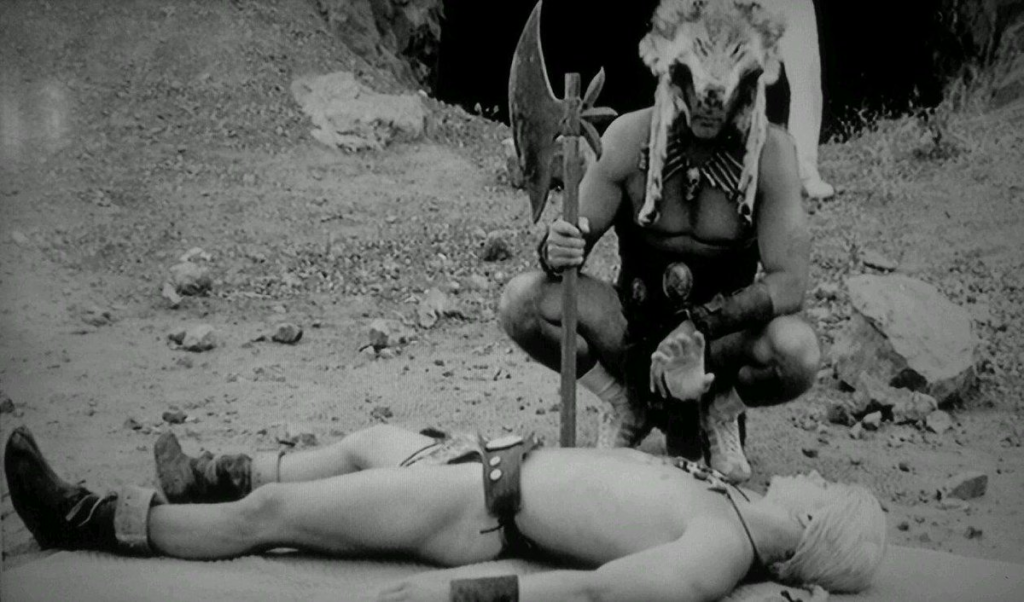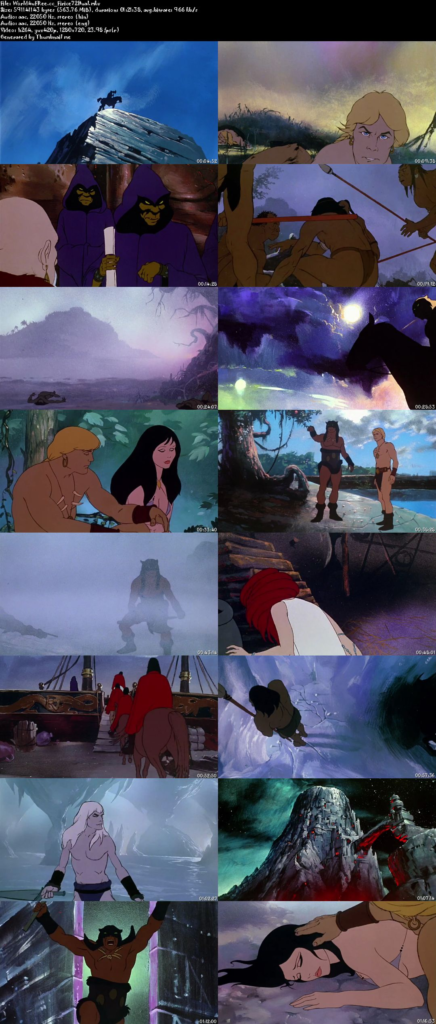
Fire and Ice is a 1983 animated film, directed by Ralph Bakshi, that tells the story of the struggle between the forces of good and evil in a fantasy world. The plot is set in motion when the evil Queen Juliana and her son, Nekron, send forth a wave of glaciers, forcing humanity to retreat south towards the equator. Nekron sends a delegation to King Jarol in Firekeep to request his surrender, but this is a ruse orchestrated by Queen Juliana for Nekron’s sub-humans to kidnap Jarol’s barefoot, bikini-clad daughter, Princess Teegra.
The film features a cast of memorable characters, including the fierce warrior Larn, the mysterious Darkwolf, and the beautiful and courageous Princess Teegra. These characters are brought to life through the use of rotoscoping, a technique in which live action footage is traced onto animation cels. The result is a visually stunning film that combines the best elements of live action and animation.
At its core, Fire and Ice is a classic tale of good versus evil, set in a fantastical world that is both familiar and exotic. The film’s creators drew inspiration from a variety of sources, including the works of fantasy artists Frank Frazetta and Boris Vallejo, as well as the classic tales of Robert E. Howard and J.R.R. Tolkien.
But Fire and Ice is more than just a retelling of these classic tales. It is a work of art that pushes the boundaries of what animation can do. By using the rotoscoping technique, Bakshi and his team were able to create a sense of realism and fluidity that is rarely seen in animated films. The characters move and behave like real people, while the fantastical world they inhabit is rendered in stunning detail.
Rotoscoping is a technique used in animation to create fluid and realistic movement by tracing over live-action footage frame by frame. The process was invented by Max Fleischer in the early 20th century and has been used in various forms by many animators since then. However, one of the most notable examples of rotoscoping in animation is the work of Ralph Bakshi and his team, who employed the technique in films like “Fire and Ice” and “The Lord of the Rings”.

Bakshi and his team of animators were able to create a sense of realism and fluidity in their films that is rarely seen in traditional animated films. The characters move and behave like real people, while the fantastical world they inhabit is rendered in stunning detail. This is due to the fact that Bakshi used live-action footage as the basis for the animation, allowing his animators to capture the nuances of movement and behavior that are difficult to achieve through traditional animation techniques.
One of the benefits of rotoscoping is that it allows animators to create a more detailed and realistic world without sacrificing the flexibility and creativity that animation offers. By using live-action footage as a guide, animators can create a world that is both believable and fantastical, seamlessly blending reality and imagination.
In “Fire and Ice”, Bakshi and his team used rotoscoping to create a world that was both epic and immersive. The film is set in a fantastical world where glaciers are threatening to engulf humanity, and the characters are larger-than-life warriors and sorcerers. The use of rotoscoping allowed Bakshi to create a sense of scale and grandeur that would have been difficult to achieve through traditional animation techniques. The result is a film that is visually stunning and immersive, with a sense of realism and depth that is rare in animated films.

However, rotoscoping is not without its challenges. It is a time-consuming process that requires a great deal of skill and patience. The process of tracing over live-action footage can be tedious, and animators must be careful to capture the nuances of movement and behavior that make the animation believable.
In conclusion, the use of rotoscoping in animation has allowed animators to create a sense of realism and fluidity that is rarely seen in traditional animated films. Bakshi and his team were able to create a fantastical world that was both immersive and believable, using live-action footage as a guide for their animation. While rotoscoping is a challenging technique, the results can be stunning, as demonstrated in films like “Fire and Ice”.

The film also features a strong script, written by Gerry Conway and Roy Thomas, both of whom had written Conan stories for Marvel Comics. The dialogue is sharp and witty, and the characters are well-developed and believable.
Fire and Ice is a testament to the power of animation as an art form. It shows that animation can be more than just a medium for children’s entertainment. It can be used to tell complex stories, explore themes of good and evil, and create characters that are as real and compelling as any live action performance.
In the end, Fire and Ice is a film that deserves to be seen and appreciated by a wider audience. It is a masterpiece of animation that combines stunning visuals, strong characters, and a compelling story to create a work of art that is both timeless and unforgettable.
